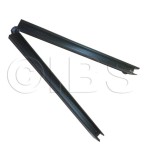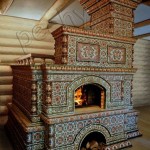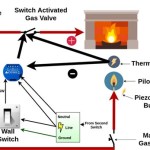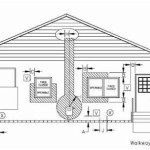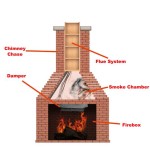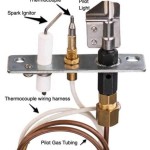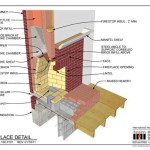Replacement Fireplace Insert Glass: A Comprehensive Guide
Fireplace inserts are a popular choice for homeowners seeking to enhance the efficiency and aesthetics of their existing fireplaces. A key component of these inserts is the glass panel, which allows for viewing the fire while containing sparks and heat. Over time, however, fireplace insert glass can become damaged, cracked, or simply lose its clarity due to soot and mineral buildup. When this occurs, replacement becomes necessary to maintain the functionality and safety of the fireplace insert.
Choosing the right replacement fireplace insert glass requires careful consideration of various factors, including the type of glass, its dimensions, safety ratings, and installation procedures. This article provides a comprehensive overview of these factors, offering valuable information for homeowners navigating the replacement process.
Understanding the Types of Fireplace Insert Glass
Not all glass is created equal, particularly when it comes to withstanding the intense heat generated by a fireplace. Several types of glass are commonly used in fireplace inserts, each with its own properties and advantages. Selecting the appropriate type for a specific insert is crucial for safety and performance.
Ceramic Glass: This is perhaps the most common type of glass used in fireplace inserts. Ceramic glass, also known as "Pyroceram," is specifically engineered to withstand extremely high temperatures, often exceeding 1300 degrees Fahrenheit. It exhibits low thermal expansion, meaning it doesn't significantly expand or contract with changes in temperature, minimizing the risk of cracking. Ceramic glass offers excellent clarity and is resistant to thermal shock.
Tempered Glass: While less common than ceramic glass in direct-flame applications, tempered glass can be found in some fireplace insert designs, particularly those with a greater distance between the glass and the fire. Tempered glass is strengthened through a heating and rapid cooling process, making it more resistant to impact than standard glass. However, it is not as resistant to extreme heat as ceramic glass and can shatter if exposed to temperatures exceeding its tolerance. Importantly, if tempered glass breaks, it shatters into small, relatively harmless pieces, reducing the risk of serious injury.
Borosilicate Glass: Borosilicate glass is known for its exceptional resistance to thermal shock and chemical corrosion. It can withstand rapid temperature changes without cracking, making it a suitable option for fireplace inserts. While not as widely used as ceramic glass, borosilicate glass offers excellent durability and clarity. It is also commonly used in laboratory glassware due to its robust properties.
When selecting a replacement glass, it is essential to consult the fireplace insert manufacturer's specifications to determine the recommended type. Using the wrong type of glass can compromise safety and void the warranty.
Measuring and Ordering Replacement Glass
Accurate measurement is paramount when ordering replacement fireplace insert glass. Even slight discrepancies in dimensions can prevent the glass from fitting properly, potentially leading to air leaks and reduced efficiency. To ensure a correct fit, the following steps should be followed:
Removing the Existing Glass (If Possible): Carefully remove the existing glass from the fireplace insert, if it is safe to do so. Document the removal process with photographs or notes to assist with reinstallation. Clean the frame thoroughly to remove any debris or adhesive residue. If the existing glass is cracked or severely damaged, exercise extreme caution during removal to avoid injury.
Measuring the Glass: Use a precision measuring tool, such as a metal measuring tape, to determine the exact dimensions of the glass. Measure the length, width, and thickness to the nearest 1/16th of an inch. Measure the glass in several places to ensure accuracy, as it may not be perfectly uniform. If the existing glass is too damaged to measure accurately, consult the fireplace insert's user manual or contact the manufacturer for the correct dimensions.
Considering Tolerances: Account for slight tolerances when ordering. Professional installers often recommend subtracting 1/16th of an inch from each dimension to ensure a comfortable fit within the frame. This allows for expansion and contraction due to temperature changes without placing undue stress on the glass.
Ordering from a Reputable Supplier: Purchase replacement glass from a reputable supplier who specializes in fireplace insert components. Provide the exact dimensions and the type of glass required. Some suppliers may offer custom cutting services to ensure a perfect fit. Prior to placing the order, verify the supplier's return policy and warranty terms.
Safe Installation Procedures
Proper installation of replacement fireplace insert glass is critical for safety and optimal performance. Incorrect installation can lead to air leaks, reduced efficiency, and potentially dangerous situations. If unsure about any aspect of the installation process, it is advisable to seek professional assistance.
Preparation: Before beginning the installation, gather all necessary tools and materials, including safety glasses, gloves, a screwdriver (or appropriate tool for removing and installing the glass retention hardware), and high-temperature sealant or gasket material. Ensure the fireplace insert is completely cool before proceeding.
Installing the Glass: Carefully position the new glass within the frame, ensuring it is centered and flush with the surrounding surfaces. Secure the glass using the original retention hardware, typically screws, clips, or a combination of both. Tighten the hardware evenly and avoid over-tightening, which could crack the glass. If using a high-temperature sealant or gasket, apply it according to the manufacturer's instructions, ensuring a complete and airtight seal around the perimeter of the glass.
Testing and Verification: After installation, allow the sealant or gasket to cure completely, if applicable. Before lighting a fire, visually inspect the installation for any gaps or leaks. Perform a smoke test by lighting a small amount of paper inside the fireplace insert and observing the flow of smoke. Any smoke escaping from around the glass indicates an air leak that needs to be addressed. If everything appears to be in order, proceed with lighting a small fire to test the functionality of the fireplace insert.
Choosing the right replacement glass, measuring accurately, and following safe installation procedures are key to maintaining the efficiency and safety of a fireplace insert. Should questions or concerns arise during the selection or installation process, it is highly recommended to consult with a qualified professional.

Wood Stove Glass Replacement Free One Day

Dm1342 Fireplace Glass Doors For Heatilator

Standard Size Masonry Fireplace Doors Fixed Frame

Woodpro Ws 1500 Stove Door Replacement Glass For Wood Fireplace

Pleasant Hearth Alsip Large Glass Fireplace Doors Ap 1132 The Home Depot

Matte Black Marco B41cf B41cfi B41hc B41hci D41 Fireplace Door

Replacing The Glass In My Direct Vent Gas Fireplace

Everything You Need To Know About Fireplace Glass Door Replacement Demers

Glass Fireplace Doors Replacement Guaranteed Fit Brick Anew

Fireplace Glass Doors Vs Screens Full Service Chimney
Related Posts

